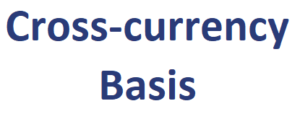Cross-Currency Basis
Cross-currency basis represents the additional cost of borrowing dollars synthetically with a currency swap relative to borrowing directly in the USD cash market. In the past, borrowing directly in USD had the same cost as borrowing in a foreign currency and hedging the exchange rate risk with a currency swap. This is referred to as the covered interest rate parity (CIRP). This relationship no longer holds today.
On this page, we discuss cross-currency basis and how it can benefit US investors.
Cross-currency basis definition
Since the Great Financial Crisis (GFC), the covered interest rate parity no longer holds. When it no longer holds, then arbitrage profits are possible theoretically. This arbitrage activity should then result in zero basis over time. Thus, in a frictionless market, cross-currency basis should not exist.
The failure of CIRP since 2008/2009 results from friction in the arbitrage market. Stricter capital adequacy requirements and rules have resulted in much higher costs to perform covered interest rate arbitrage transactions. High demand for USD loans is another reason that has led to a premium for USD lending via swaps.
Cross-currency basis is the additional cost of borrowing dollars synthetically with a currency swap relative to the cost of borrowing directly in the USD cash market. If the cost of borrowing dollars synthetically via a swap is greater than the cost of direct USD borrowing, then the foreign currency is said to be exhibiting a negative basis.
Most currencies show a negative basis against the USD since the financial crisis. The implication is that the USD borrower must accept a lower interest rate on the foreign-currency interest payments it receives.
USD fixed-income investors can benefit when foreign currencies have a negative basis versus the USD by swapping USD for foreign currency and investing in foreign currency denominated bonds and using a currency swap to convert the returns back to USD. Using this strategy, a USD investor can earn a higher return than simply investing in the USD denominated bonds.
Summary
We discussed cross-currency basis and why most currencies exhibit negative basis vis-a-vis the USD.

